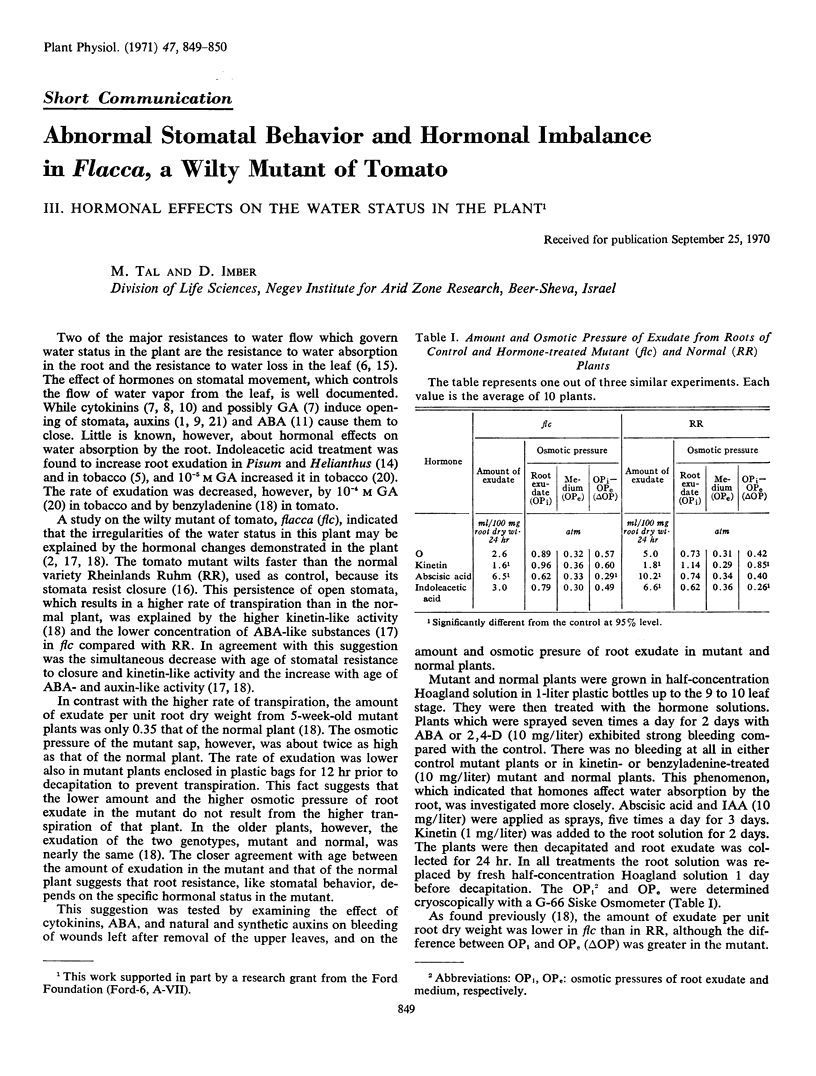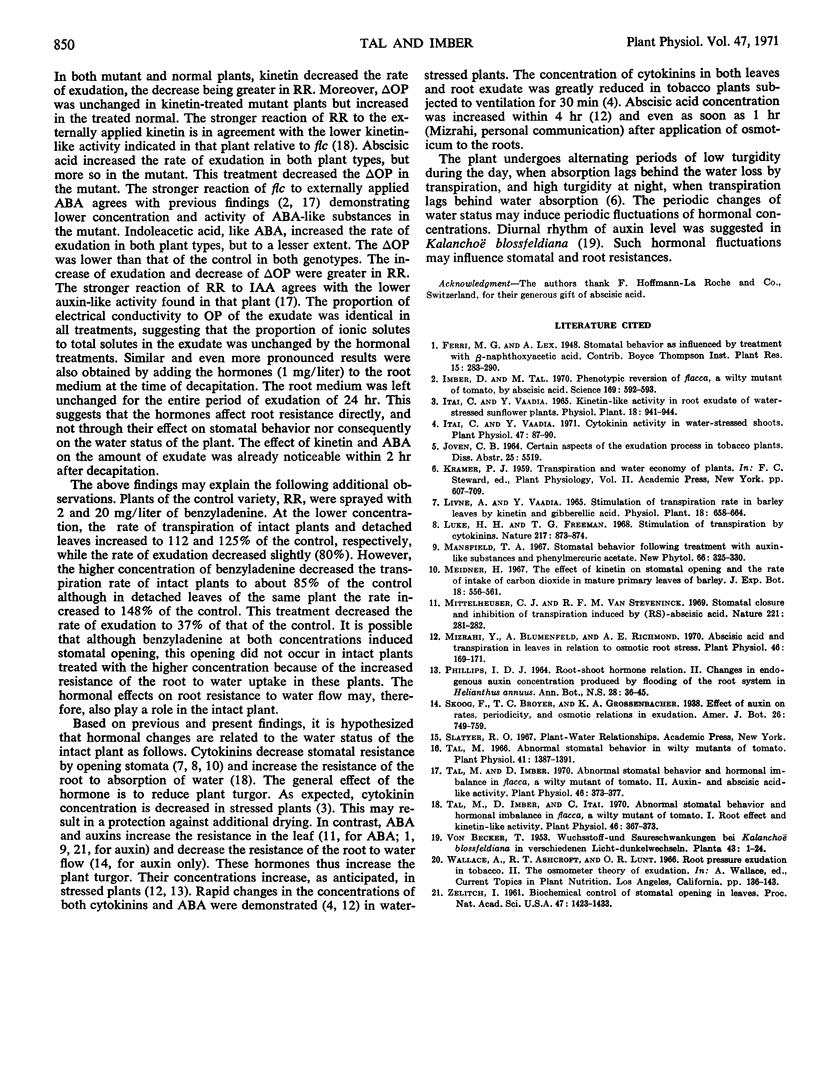Full text
PDF

Selected References
These references are in PubMed. This may not be the complete list of references from this article.
- Imber D., Tal M. Phenotypic reversion of flacca, a wilty mutant of tomato, by abscisic Acid. Science. 1970 Aug 7;169(3945):592–593. doi: 10.1126/science.169.3945.592. [DOI] [PubMed] [Google Scholar]
- Itai C., Vaadia Y. Cytokinin Activity in Water-stressed Shoots. Plant Physiol. 1971 Jan;47(1):87–90. doi: 10.1104/pp.47.1.87. [DOI] [PMC free article] [PubMed] [Google Scholar]
- Mizrahi Y., Blumenfeld A., Richmond A. E. Abscisic Acid and transpiration in leaves in relation to osmotic root stress. Plant Physiol. 1970 Jul;46(1):169–171. doi: 10.1104/pp.46.1.169. [DOI] [PMC free article] [PubMed] [Google Scholar]
- Tal M. Abnormal stomatal behavior in wilty mutants of tomato. Plant Physiol. 1966 Oct;41(8):1387–1391. doi: 10.1104/pp.41.8.1387. [DOI] [PMC free article] [PubMed] [Google Scholar]
- Tal M., Imber D. Abnormal Stomatal Behavior and Hormonal Imbalance in flacca, a Wilty Mutant of Tomato: II. Auxin- and Abscisic Acid-like Activity. Plant Physiol. 1970 Sep;46(3):373–376. doi: 10.1104/pp.46.3.373. [DOI] [PMC free article] [PubMed] [Google Scholar]
- Tal M., Imber D., Itai C. Abnormal Stomatal Behavior and Hormonal Imbalance in flacca, a Wilty Mutant of Tomato: I. Root Effect and Kinetin-like Activity. Plant Physiol. 1970 Sep;46(3):367–372. doi: 10.1104/pp.46.3.367. [DOI] [PMC free article] [PubMed] [Google Scholar]
- Zelitch I. BIOCHEMICAL CONTROL OF STOMATAL OPENING IN LEAVES. Proc Natl Acad Sci U S A. 1961 Sep;47(9):1423–1433. doi: 10.1073/pnas.47.9.1423. [DOI] [PMC free article] [PubMed] [Google Scholar]


